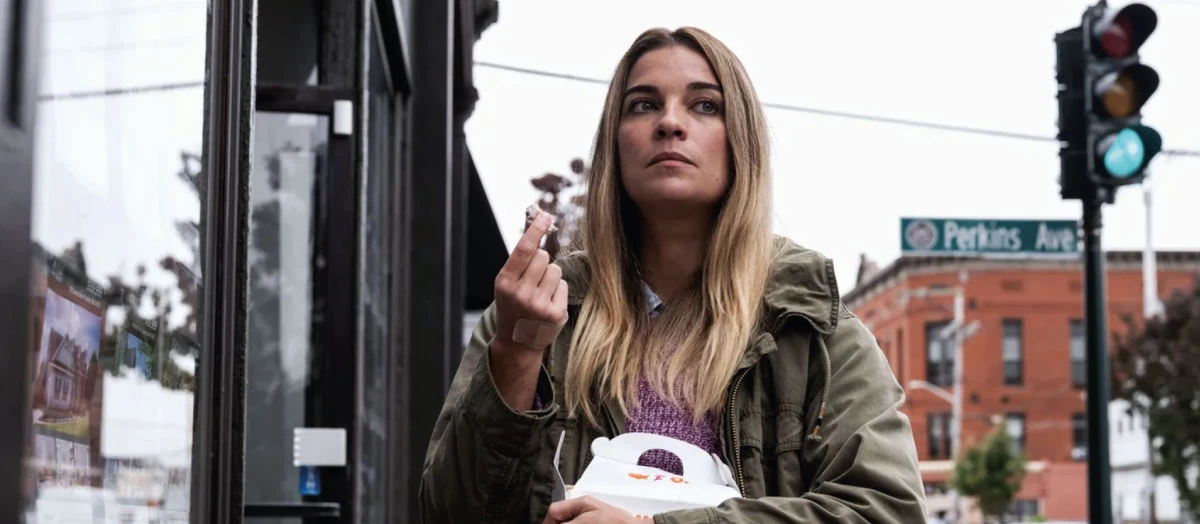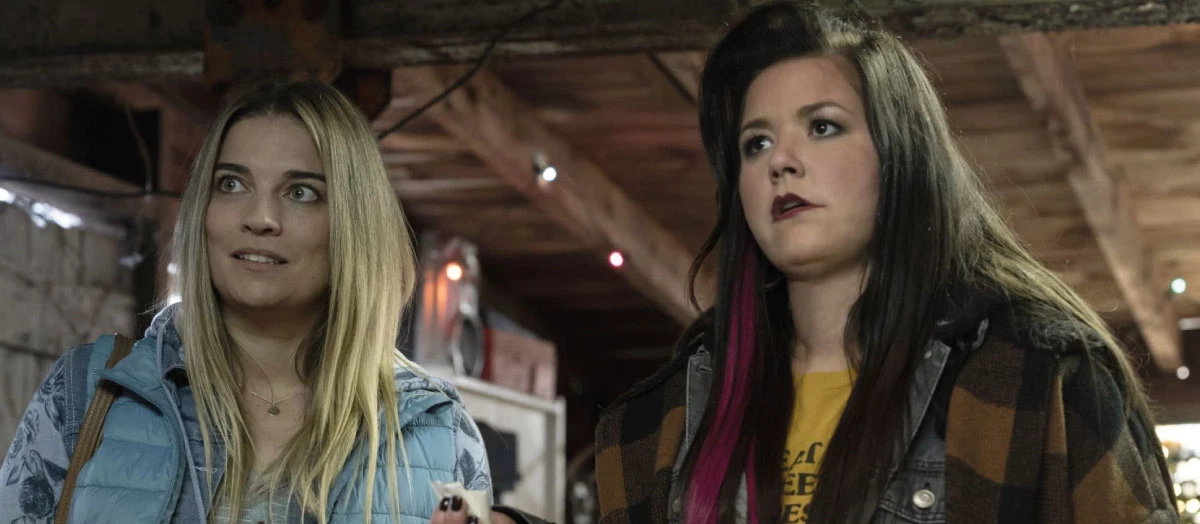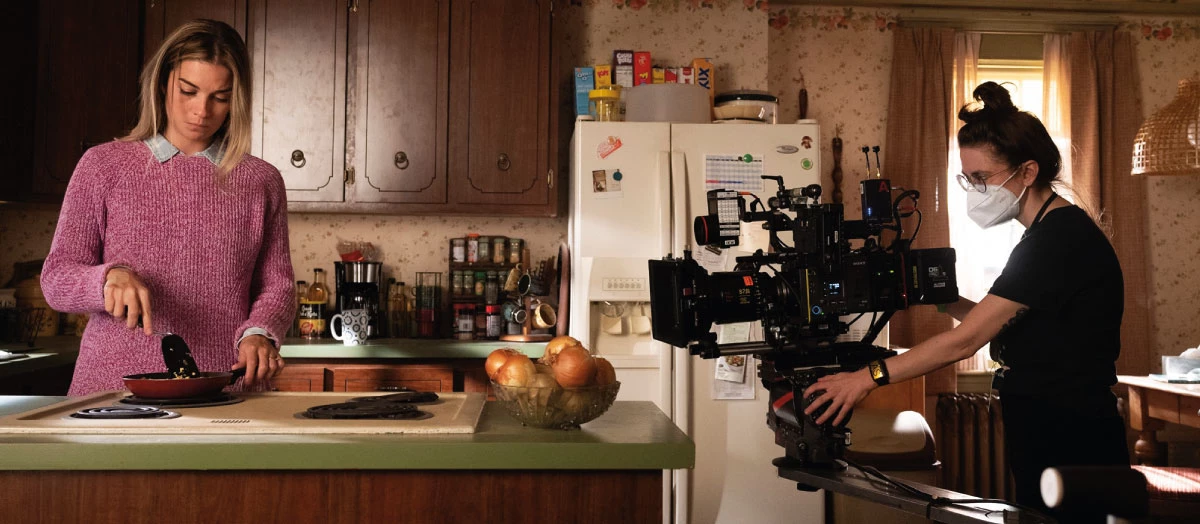
Interview with Matthew Ardine, Gaffer of Everything Everywhere All at Once
Directed by Dan Kwan and Daniel Scheinert, Everything Everywhere All at Once is a new action comedy from A24. PRG sat down with Gaffer ...
AMC’s new series Kevin Can F**k Himself starring Annie Murphy of Schitt's Creek just got the renewal for a season two, which comes as no surprise as the dark comedy was AMC’s most watched series on their streaming service, AMC+. Created by Valerie Armstrong and executive producers Rashida Jones and Will McCormack, Kevin was the biggest new series launch in the history of the service. According to Deadline, it was particularly popular with young, upscale, and female-skewing viewers.
Kevin Can F**k Himself switches visually between the clean, brightly lit aesthetic of a multi-cam sitcom and the intimate, darker single-cam world of Allison (Murphy). The choice is designed to put you into the world of Allison, a fed-up housewife who decides she wants to kill her husband Kevin, played by Eric Petersen. The show is inspired by CBS' Kevin Can Wait, the Kevin James series that notoriously killed off Erinn Hayes' wife character.
PRG provided all cameras for the series from its Brooklyn Camera Prep Facility. We sat down with cinematographer Adrian Peng Correia to discuss the impressive world building, how he shot the stars, and his gear choices.
PRG: Adrian, thanks so much for taking the time out of your shooting schedule to sit down with us. Let’s kick this off by describing the worlds of Kevin and Allison.
Adrian Peng Correia: Of course. Kevin’s world that Allison inhabits is a traditional multi-cam sitcom. This is anchored by a funny, oafish, slightly stupid but still lovable kind of guy. Kevin is wonderfully inept at life, and the proscenium for him is that all the people in his life support his world view and lifestyle. They all service his story comedically in the context of the sitcom genre.
For me as a DP, that meant honoring what came before. Not just the masters of the genre but also those who lit in that style. I think it’s a really underrated style and an interesting thing to try to portray realistically.
PRG: Yes! Kevin transports us to the worlds of Home Improvement, Will & Grace, and Frasier. It’s very nostalgic for viewers visually, and the joke writing is also superb.
APC: Absolutely, and of course there are different styles within the genre. I always think of the highly polished work of Gary Baum on Will & Grace. Then there’s Steven Silver’s work on The Big Bang Theory, which has a more heightened tone for a multi-cam, where you’d usually expect to have high-key comedic lighting.
Roseanne had a more textured and lived-in feel to the comedy and lighting. The textures and overall ambiance feel more grounded. I like that nuance in the comedy. All that DNA is woven into Kevin’s world.

PRG: It’s a jarring contrast to what happens when we switch to Allison’s perspective.
APC: This is where being delicate comes in. Based on what’s unraveling in Allison’s psyche, we could have gone extraordinarily dark, almost to the heavy, edgy drama of something like 21 Grams. That’s where I saw it heading early on, but Valerie and writer Craig DeGregorio wanted there to be connective tissue. The show in the single cam is dark but it has a lighter tonal quality to the mid tones. There’s this base level ambiance to give it connection to the multi-cam world, but still feels much more real.
The multi-cam world is defined by 4 cameras and the classic three-wall set, characteristic of the genre. Single cam world is roving, free, much more subjective, and connected to Allison’s single perspective. The camera is so much closer to everyone in her world.
PRG: How did you define it stylistically?
APC: The director of the first two episodes Oz Rodriquez doesn’t like overs and favors clean singles with wider lenses, while I like my eye lines to be slightly lower with the camera, so that defines a lot of the photography. You take all these tastes and aesthetics and combine them into what categorizes the show photographically. That’s what it all evolved from, as well as Annie’s face.
PRG: Annie certainly makes a full transformation from the pretty rich girl archetype of Alexis Rose in Schitt’s Creek. Tell me more about how you shot her face.
APC: Her face is very particular. She’s beautiful but for this character, we had to find a way to make her face feel more normal than the Cover Girl look of Alexis Rose.
This worked because of the nature of the way she uses her face as an actor. She has this Jim Carrey elasticity to her facial movements; I like the way the lower camera angle worked for her because it allowed her chin, eyes, cheeks, and smile to play in a different way.
The idea of this woman who is cracking at the seams and the stitches aren’t holding anymore aided to the dramatic and comedic performances. Framing her face was one of the touchstones of the series visually. That also happens with Patty, Mary Hollis Inboden’s character. The cameras view them in similar ways which helps pull the story together for these two women.

PRG: Now let’s talk gear. What did you use?
APC: For the multi-cam, we used Sony F55 cameras with Fujinon 25-300mm lenses. The order included camera pedestals, terminal racks and cabling for signal routing and image control. It’s an incredible amount of equipment. Keeping all of that gear teched and swapped when needed was a huge undertaking and PRG never kept us waiting.
For single cam, we used a Sony Venice with Cooke S7 Full Frame Prime Lenses. Those lenses are in high demand, but our PRG rep Victor Avila worked incredibly hard to track them down for us.
We went with the “Cooke look,” not so much to bring warmth and bokeh, but instead the dimensionality of faces. The 21mm ended up being a massive workhorse for us. We used it on nearly all of our wide shots and was critical to defining our tableau wide shots that were framed by Shannon Madden, my A-camera operator (pictured below).
PRG’s ability to keep us serviced so seamlessly during the height of COVID was a bedrock for our production.

PRG: No plot spoilers, but there are some important road trip episodes where you utilized PRG’s Enhanced Environment car process. How was the experience shooting what would have otherwise been very hectic scenes in a studio environment?
APC: It wouldn’t have been possible to drive through New England to shoot those scenes with the unpredictability of the weather, COVID-19 and the tight schedule we had. We used the system to be able to make two travelogue episodes in a simple and effective manner. The system worked incredibly well. I was frankly ecstatic with the results. You’re using these LED screens to not just provide you with background but also an interactive lighting element. I’ve used other systems like this before, but none of them compared to PRG’s setup.
The car process allowed for me to have more freedom with interactivity of the light and exposure to what was in my mind. You can make it look pristine because you have all these monitors around the car, reflections, and real-time lighting effects. But what defines traditional driving for me is the fact that you can’t control everything. This system gave me the control to allow imperfection. I hadn’t had this experience with a driving system before that allowed me to photographically maintain my vision of realism. I don’t want to do driving scenes in another way. We got better performances and it was convenient.
PRG: Using a new system can feel intimidating, so glad to hear this was so smooth for you.
APC: The people on site made it smooth. PRG sent experienced technicians who knew the systems. I got answers to every question I asked along with insight to how to achieve the look I was going for. When we went to rolling, I felt fully supported even though I’d never used the system before.
There are not many companies that can handle this diversity of shooting. There are such particular, different needs for each show type, along with the driving LED system. Having a vendor who can provide that expertise and specialty takes a great level of stuff off your plate as a DP.